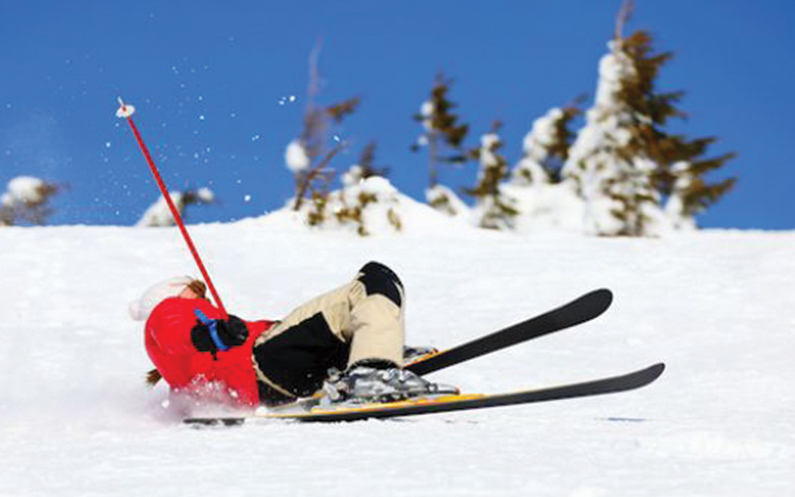In parts of the country blessed—or, depending on your fondness for the season, cursed—with significant snowfall this time of year, skiing, snowboarding and sledding are popular activities.
But it’s important to take safety precautions to avoid becoming part of these types of statistics. In 2014:
- There were more than 114,000 snow skiing-related injuries treated, according to the U.S. Consumer Product Safety Commission.
- There were an additional 79,000 injuries associated with snowboarding.
- Sledding lands about 20,000 children in the emergency room each year, according to research from the Nationwide Children’s Hospital in Columbus, Ohio.
When skiing or snowboarding, make sure you wear proper and well-fitting equipment. Dress in layers; remember sunglasses, goggles and sunscreen; and wear a protective helmet.
You also need to listen to your body and rest when needed, since injuries are more likely to occur when tiredness sets in. Also, don’t be persuaded to attempt slopes or speeds beyond your abilities, advises the website ski-injury.com. A person is more likely to be injured if they are trying to keep up with more experienced friends and pushing themselves beyond the limitations of their skills.
Some of the most common ski mishaps are knee and shoulder injuries. Skiers often put their arms out to break a fall, which can result in a sprain or dislocation. Fractures around the shoulder and lower leg are common. And skiers who fall on an outstretched hand while holding a ski pole can get “skier’s thumb,” according to ski-injury.com.
The best offense is a good defense. Novice skiers and snowboarders, or those who haven’t been on the slopes in a while, should consider taking a lesson. In addition improving form and technique, skiers and snowboarders will get trained on how to fall correctly to reduce the risk of injury.
For sledding, the advice about dressing in layers and wearing a helmet also applies. Kidsheath.org also suggests finding a hill that has a long flat area at the bottom for safely stopping, one that isn’t near a street or parking lot. Try to avoid hills that are icy, which could make for a harder landing if a child falls from the sled. And only go during daytime hours or on a hillside that is well-lit.


Recent Comments